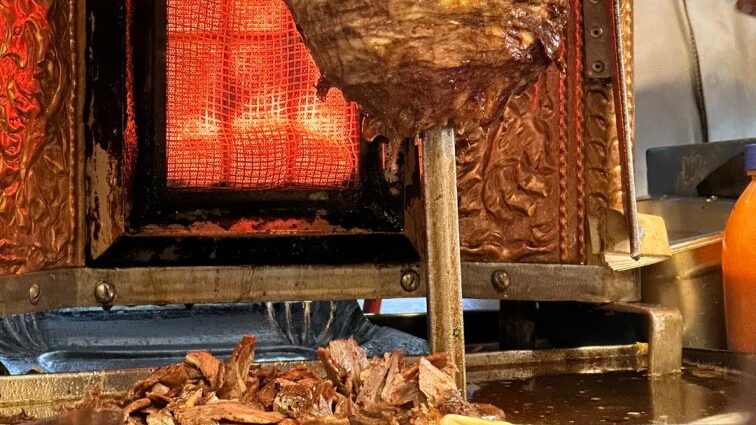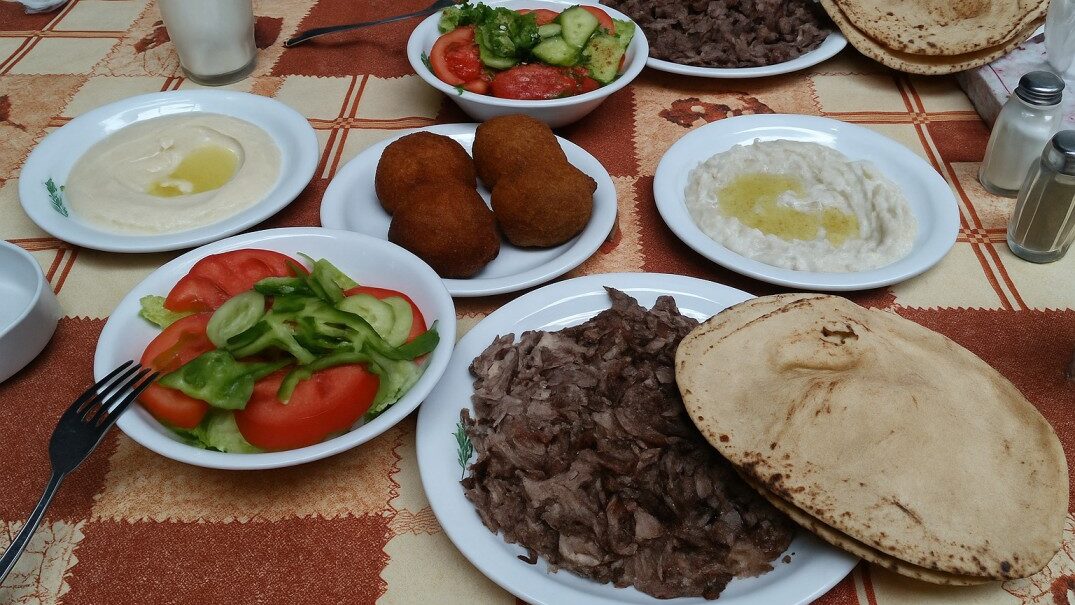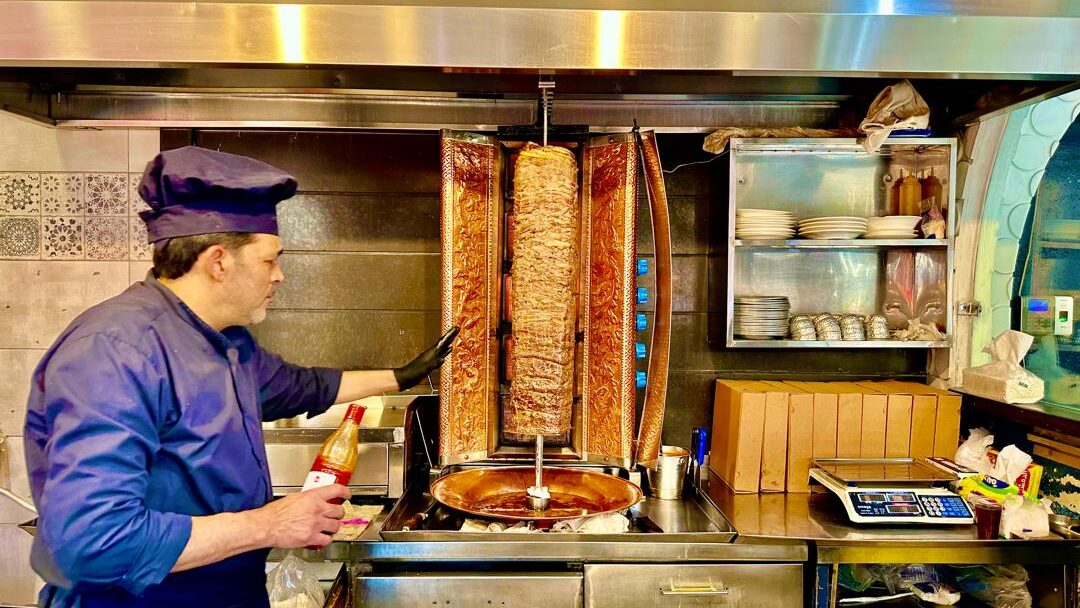When people ask where the best shawarma in the world comes from, the answer is almost always Damascus. But why is this city, among so many across the Middle East, considered the true home of shawarma’s greatest expression?
To understand this, we need to look at three simple truths: origin, adaptation, and perfection.

1. It Began With an Idea That Travelled
The story of shawarma does not begin in Damascus. It begins in Turkey, with the invention of the döner kebab in the 19th century. Turkish cooks discovered that stacking meat vertically allowed it to baste in its own juices while cooking evenly, producing slices that were tender, juicy, and aromatic.
But as with all ideas, its journey is what shaped it. When the döner technique travelled to Syria in the early 20th century, it encountered a city with its own traditions, tastes, and culinary philosophies.
2. Damascus Turned Döner Into Shawarma
In 1906, a Damascene chef named Sadeeq Al-Khabbaz brought the vertical rotisserie method from Istanbul to his hometown. But he didn’t just copy what he saw. He transformed it.
In Damascus, shawarma became something distinctly local because of three innovations:
- The Spices: Syrian shawarma uses a unique blend of spices that includes cinnamon, cardamom, cumin, and black pepper. This creates a deeper warmth and subtle sweetness that Turkish döner does not have.
- The Bread: Instead of serving the meat on a plate with rice, as in Turkey, Damascus wrapped the thin slices of meat in fresh markouk or saj bread, turning it into a meal you could carry through the old city streets.
- The Sauces and Pickles: The addition of garlic sauce (toum), pickled cucumbers, and sometimes parsley gave shawarma a new balance – richness from the meat, sharpness from garlic, and acidity from pickles.
Through these adaptations, Damascus transformed döner into shawarma, giving it a completely new identity.

3. Damascus Perfected Shawarma With Simplicity
While other cities added fries, cheese, or heavy mayonnaise-based sauces, Damascus maintained simplicity. Here, shawarma is not fast food – it is part of cultural pride.
What makes Damascus shawarma the best is not complexity. It is purity:
- Fresh meat every day, usually thigh cuts, never frozen.
- Clean preparation areas, often visible to customers, building trust across generations.
- Consistent technique, with recipes passed down within families for over a century.
This simplicity respects the core flavours rather than masking them, creating a balance of meat, spices, garlic, and bread that feels honest and complete.

4. Shawarma as Cultural Heritage
In Damascus, shawarma is more than food. It is an anchor of identity. People recall their childhood walks through Al-Marja Square, the smell of roasting meat drifting across the old streets, and families gathering around shawarma wraps on Friday afternoons.
This emotional bond, passed down over generations, makes shawarma here not just delicious, but meaningful. It is part of the city’s soul – a taste that tells its history.
So why is Damascus home to the world’s best shawarma?
Because it took an idea from elsewhere, respected its essence, adapted it to local tastes, and perfected it with simplicity and care. In every bite of Damascene shawarma, you taste:
- A method born in Turkey.
- Spices crafted in Syria.
- A tradition kept alive through love and pride.
That is why, even as shawarma spreads across the world, those who taste it in Damascus know there is nothing quite like it. Here, shawarma is not just food. It is history, culture, and identity – wrapped in warm bread and seasoned with memory.
Join Us and Taste the Story Yourself
If reading this made you crave authentic shawarma, imagine tasting it in the narrow streets of Damascus, guided by locals who know each hidden gem. Join our cultural and food tours to experience shawarma the way it was meant to be enjoyed – with stories, history, and the warmth of Syrian hospitality.
